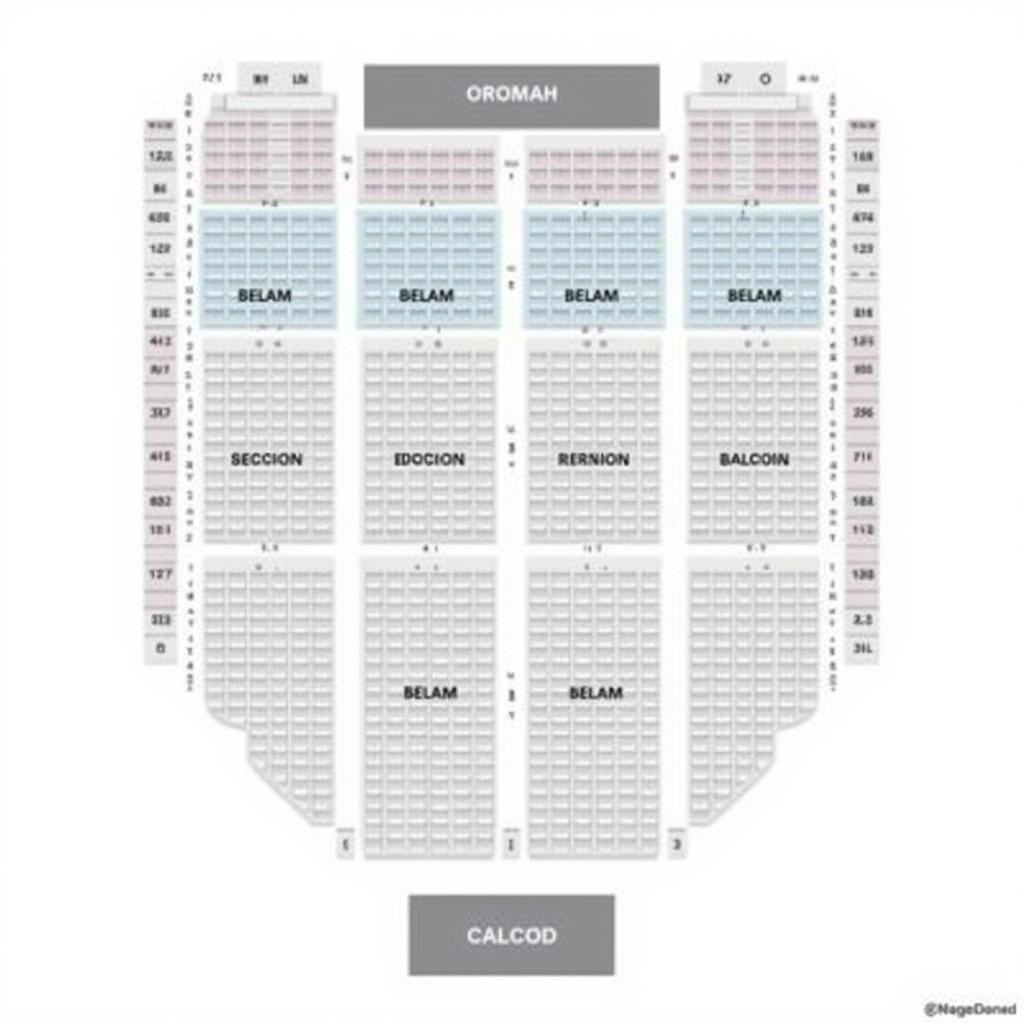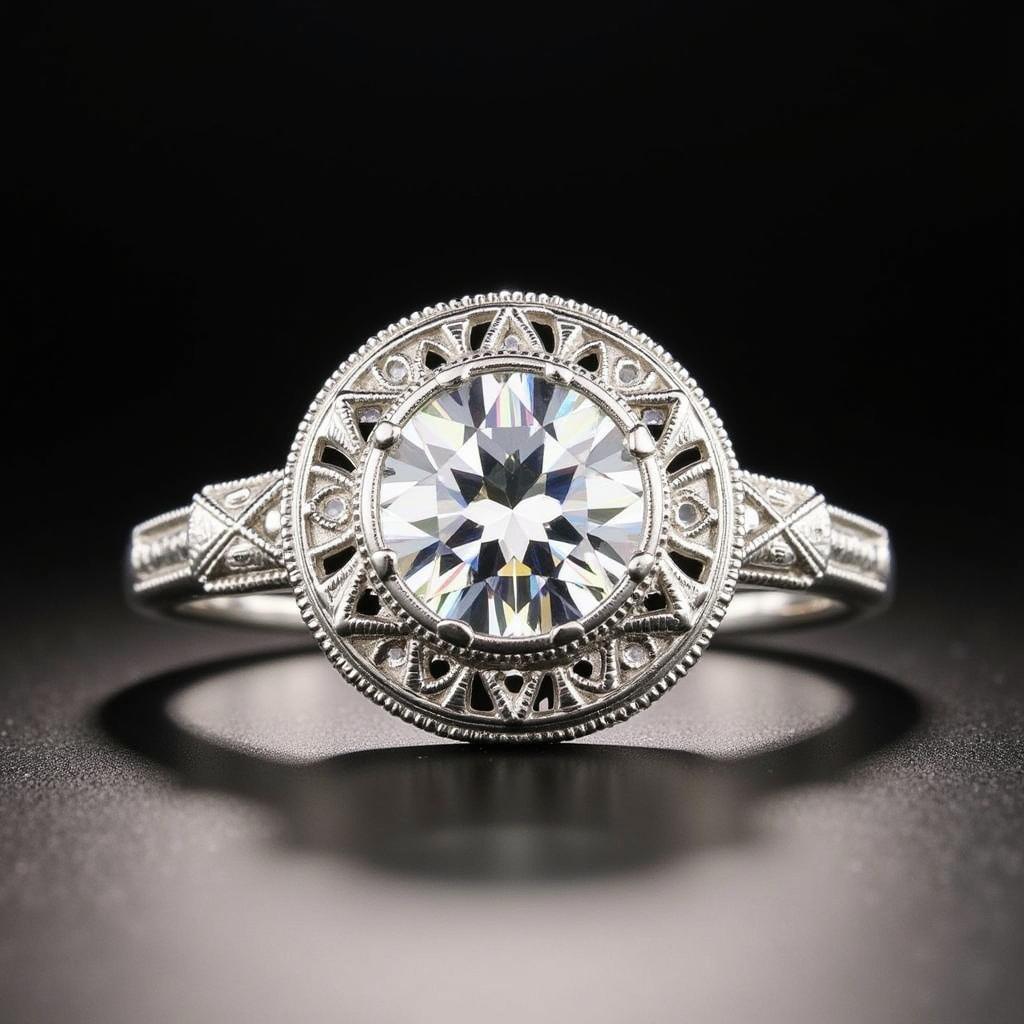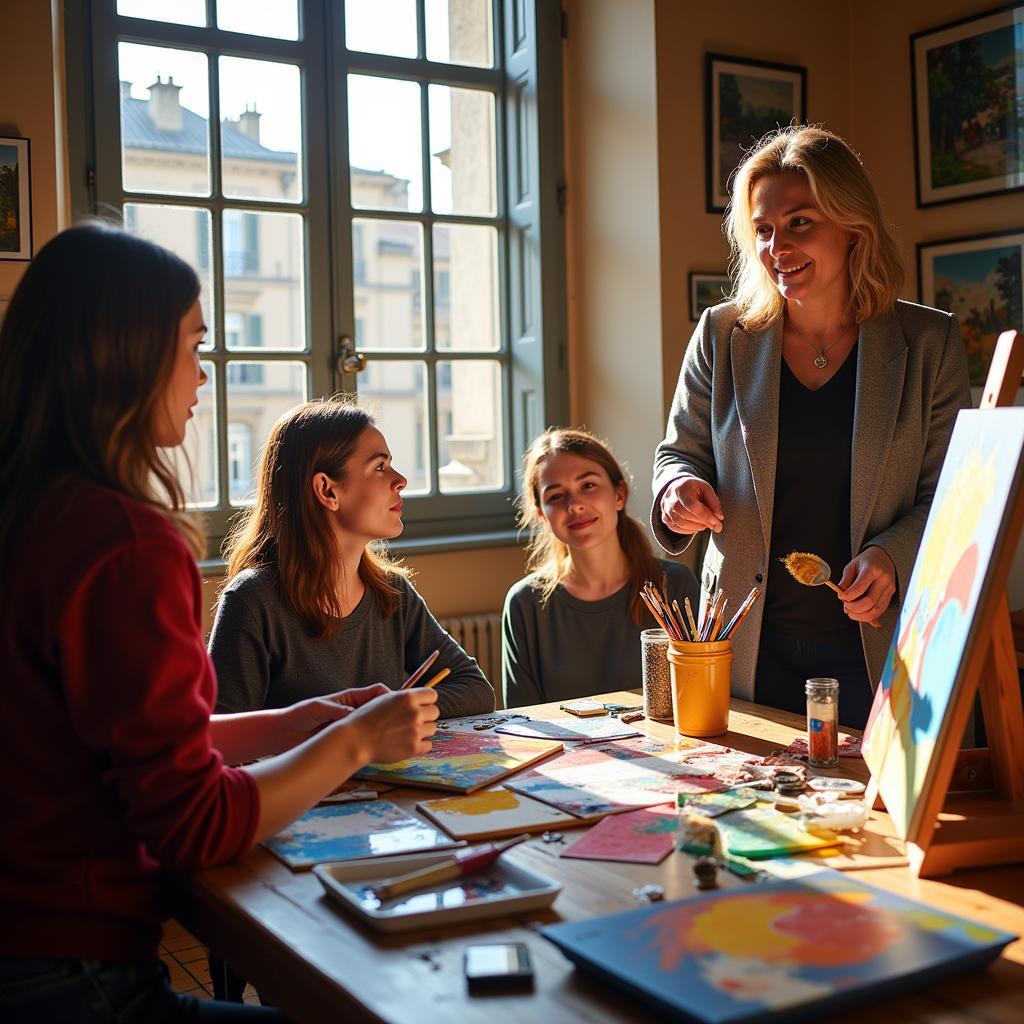Journey Through Time with Antique Religious Art
Antique Religious Art provides a captivating window into the beliefs, rituals, and artistic expressions of past civilizations. More than just aesthetic objects, these pieces served as powerful tools for spiritual devotion, conveying complex theological concepts and historical narratives. From ancient Egyptian hieroglyphics to Byzantine icons and medieval triptychs, each piece holds stories that continue to resonate with viewers centuries later.
Unveiling the Sacred: Exploring the Significance of Antique Religious Art
Antique religious art served a variety of purposes, primarily as a means to communicate religious beliefs and stories to both the literate and illiterate. Imagine a world before mass printing, where intricate carvings, vibrant paintings, and symbolic sculptures provided a visual language for understanding the divine.
Here’s a glimpse into the varied roles these artworks played:
- Instruction and Education: Artworks often depicted scenes from sacred texts, serving as visual aids for religious teachings. Imagine a medieval altarpiece depicting scenes from the life of Christ, making the stories accessible to a largely illiterate population.
- Devotional Objects: Icons, small portable paintings often depicting Christ, the Virgin Mary, or saints, were common in Byzantine art. They served as focal points for personal prayer and meditation, much like rosaries or prayer beads are used today.
- Expressions of Faith and Patronage: The creation of grand cathedrals adorned with sculptures and paintings was a testament to faith and a means for wealthy patrons to display their piety and secure their place in the afterlife.
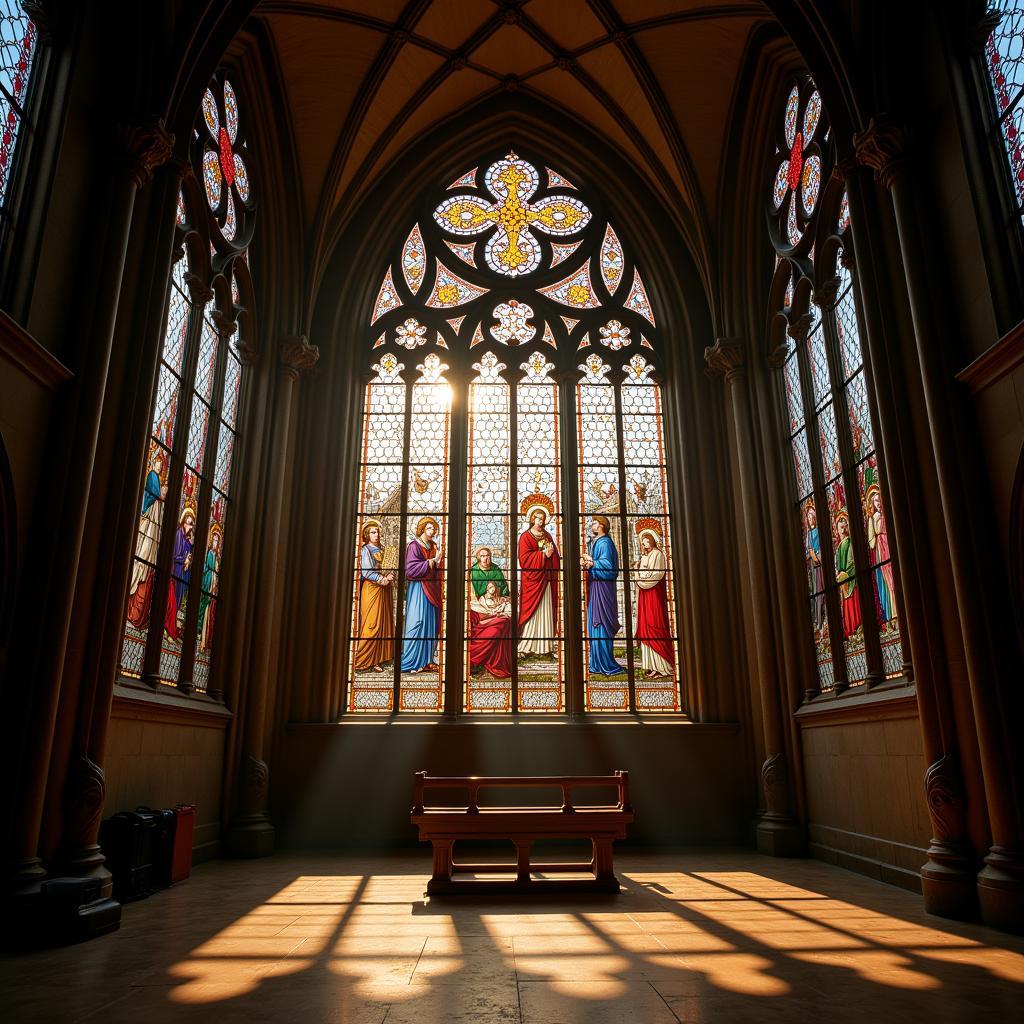 Stained Glass Window in a Gothic Cathedral
Stained Glass Window in a Gothic Cathedral
The Allure of Antique Religious Art: A Collector’s Perspective
Antique religious art continues to fascinate collectors and art enthusiasts today. The allure lies not only in their aesthetic beauty and craftsmanship but also in their historical significance. Each piece offers a tangible connection to the past, providing insights into the evolution of religious practices, artistic styles, and cultural values across different eras.
Dr. Eleanor Vance, an art historian specializing in medieval art, explains, “Collecting antique religious art is akin to preserving fragments of history imbued with spiritual resonance. Each piece is a testament to the enduring power of faith and human creativity.”
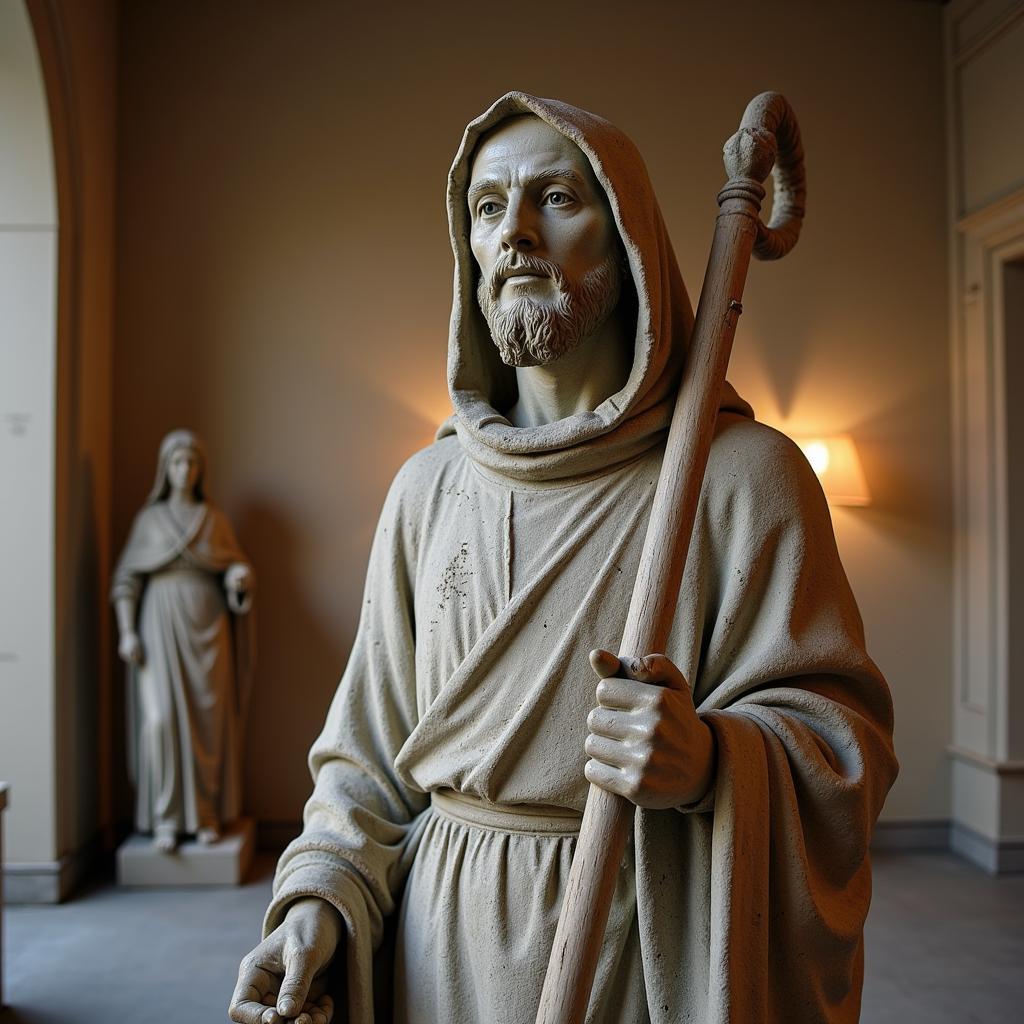 Antique Religious Art – Sculpture
Antique Religious Art – Sculpture
Navigating the World of Antique Religious Art: Tips for Collectors
Venturing into the world of antique religious art can feel daunting, but a few key tips can help you appreciate and potentially acquire these treasured pieces:
- Focus Your Interests: Identify specific periods, cultures, or religious traditions that resonate with you. Perhaps you’re drawn to the serene beauty of Byzantine icons, the intricate details of Jewish diamond art, or the symbolism found in antique Chinese wall art.
- Research and Education: Familiarize yourself with key artistic styles, materials, and iconography. This knowledge will help you authenticate pieces, understand their significance, and make informed collecting decisions.
- Seek Reputable Sources: Purchase from reputable dealers, auction houses, or galleries specializing in antique religious art. They can provide provenance information, which traces the ownership history of a piece, ensuring its authenticity.
- Condition is Crucial: Carefully examine the condition of any artwork you consider. Restoration work can impact value. If necessary, consult with professional art dry cleaners specializing in antique pieces.
- Connect with Experts: Don’t hesitate to reach out to museum curators, art historians, or appraisers for guidance and authentication. Their expertise can prove invaluable in your collecting journey.
Conclusion: Keeping Faith and History Alive
Antique religious art serves as a tangible bridge connecting us to the spiritual traditions and artistic achievements of our ancestors. Whether appreciated for their aesthetic beauty, historical significance, or spiritual resonance, these pieces offer a glimpse into the enduring power of human faith and creativity. By understanding the stories they tell, we gain a deeper appreciation for the diverse tapestry of human history and the enduring search for meaning that connects us across time.
FAQs About Antique Religious Art
1. What are the most common materials used in antique religious art?
Antique religious art encompasses a wide range of materials, including wood, stone, metal, textiles, and pigments. The specific materials used varied depending on the culture, time period, and purpose of the artwork.
2. How can I tell if a piece of antique religious art is authentic?
Authenticating antique religious art requires careful examination of factors like style, materials, craftsmanship, and provenance. Consulting with reputable dealers, auction houses, or appraisers specializing in the field is crucial.
3. What is the significance of iconography in antique religious art?
Iconography refers to the visual symbols and imagery used in art to represent religious figures, events, and concepts. Understanding the iconography of a particular piece is essential for deciphering its meaning and significance within its religious context.
4. What are some tips for displaying and preserving antique religious art?
Proper display and preservation are crucial for safeguarding the longevity of these delicate pieces. Consider factors like light exposure, humidity control, and secure mounting to prevent damage. Consulting with art conservators for guidance on specific care requirements is advisable.
5. Where can I learn more about the history and significance of antique religious art?
Museums, art history books, academic journals, and reputable online resources dedicated to art history and religious studies offer a wealth of information. Additionally, attending lectures, symposiums, or guided tours led by experts can provide valuable insights.
Explore Further:
For those interested in exploring the beauty and diversity of antique religious art, consider delving into the world of Vietnam art paintings, which often depict scenes from Buddhist traditions and offer a unique perspective on religious art from Southeast Asia.
Need Assistance?
Contact us for any inquiries or assistance related to antique art.
- Phone: 02462573573
- Email: danteum@gmail.com
- Address: Savico Megamall, 7-9 Đ. Nguyễn Văn Linh, Gia Thụy, Long Biên, Hà Nội 10000, Việt Nam
Our dedicated customer support team is available 24/7 to assist you.
